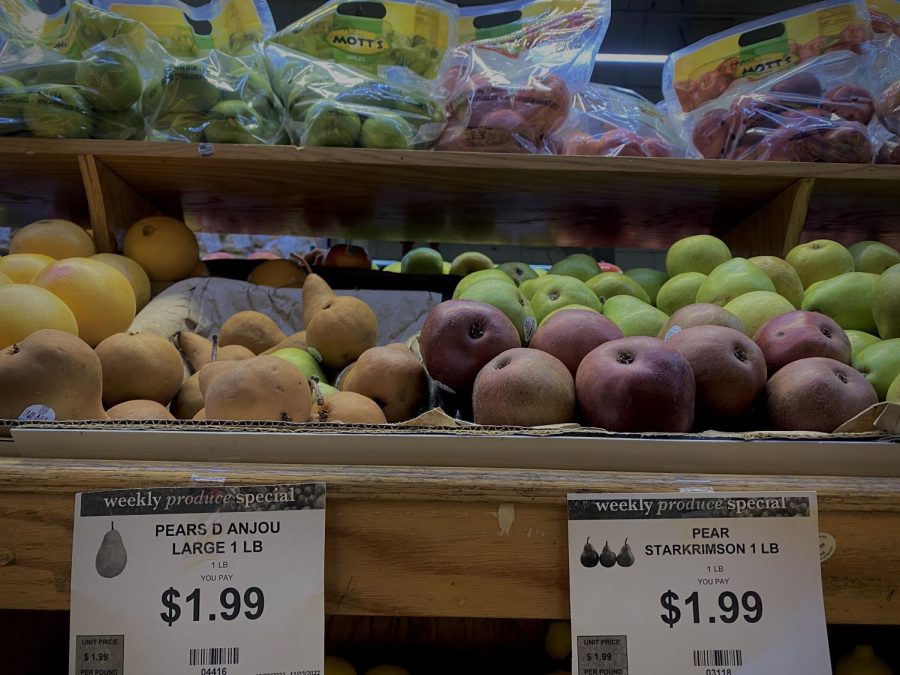Inflation hits consumers at the grocery store
November 18, 2022
Inflation is not only hitting American consumers but food manufacturing companies as the prices of their goods at grocery stores become expensive and financially inaccessible.
Grocery prices increased 12.4% in the past year, according to the U.S. Bureau of Labor Statistics’ October consumer price index report. Inflation is the primary cause of higher prices, but there are more factors at play, such as energy and transportation costs.
The index report said energy prices increased 17.6% this year to date, while transportation expenses went up 8%. Both factors are crucial to transporting produce from farms to stores, in addition to growing the crops themselves.
About 1.9% of the United States’ total energy consumption comes from agricultural production, according to the U.S. Department of Agriculture.
Companies that manufacture food have employed tactics to reduce labor costs due to inflation. As a result, grocery prices may show signs of “shrinkflation” and “skimpflation.”
Shrinkflation is when products become smaller in weight, size or quantity while their prices remain unchanged or increase.
According to the research firm Morning Consult, around 54% of American consumers surveyed reported that the supplies in their local grocery stores decreased in weight and increased in price.
Producers do this because of inflated energy costs and compromised supply chains.
“When you notice that the package is smaller, or you’re getting less for the same price, it’s especially frustrating,” Emily Moquin, a food and beverage analyst, told CNBC.
While shrinkflation impacts the size of products, “skimpflation” impacts the taste of products.
“Skimpflation” is when companies use cheaper ingredients to reduce costs while still potentially increasing the price for consumers.
Due to the different ingredients, customers can taste the change in the quality of their groceries. At the same time, their wallets pay the price.
Consumers tasted the effect of “skimpflation” in their butter products and sandwich spreads. Conagra Brands Inc. reduced the amount of vegetable oil in its Smart Balance spread from 64% to 39%, while increasing the price.
“We have been loyal Smart Balance customers for a long time, but something changed,” a customer said in an online review, according to CBS News. “It is now really soft, spits all over when frying an egg and doesn’t melt on toast. Just as bad, it is over $10 now for the big tub.”
Consumer World Founder Edgar Dworksy told CBS News “skimpflation” is hurtful to the economy and misleading to consumers, despite being a cost-saving measure.
As a result, customers are cutting back on spending on specific products, turning to alternative products or nothing at all.
“I’m getting creative with trying to save money,” Natalie Existe — a health counselor from New Jersey — told The Wall Street Journal, adding that she now has to buy products in bulk and lower quality, too.
Lauren Eccleston, another New Jersey resident, also told the news outlet that she is cutting back on grocery spending.
“I was never somebody who was super price-conscious,” Eccleston said. “I am now looking.”
In addition to the size and quality of their food, American consumers are still concerned about making enough money to afford it.
The New York Post reported that 72% of surveyed adults are cautious about what products they purchase, while 42% said they are concerned about depleting their food supply before they’re able to replenish it.
As inflation persists and hits the U.S. economy harder, it will take time for consumers to recover.







